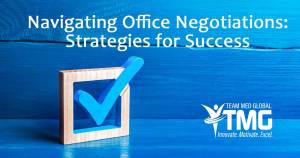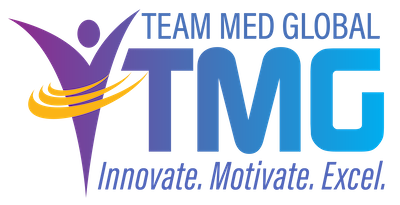 Negotiation is an essential skill for any MSP, and is a key driver of personal effectiveness in TMG’s EMSP Core Competency Model. From salary discussions to task allocation, knowing how to negotiate can pave the way for collaborative solutions that benefit all parties involved. The following delves into the art of negotiation, the strategies that can be employed, and the stages that indicate a successful negotiation.
Negotiation is an essential skill for any MSP, and is a key driver of personal effectiveness in TMG’s EMSP Core Competency Model. From salary discussions to task allocation, knowing how to negotiate can pave the way for collaborative solutions that benefit all parties involved. The following delves into the art of negotiation, the strategies that can be employed, and the stages that indicate a successful negotiation.
Common Office Negotiation Scenarios
In an office environment, various situations can arise that require negotiation. These might include salary negotiations, where you seek fair compensation for your skills and contributions. Task allocation is another area where negotiation comes into play, as team members might need to discuss who takes on what role to ensure balanced workloads and optimal productivity. Convincing a colleague to support your idea or take on a task they’re hesitant about is yet another common scenario that requires negotiation.
Exploring Negotiation Strategies
Collaborative (Win-Win) Strategy: This approach focuses on seeking mutual benefit by identifying shared interests and finding solutions that satisfy both parties. It fosters open communication and encourages creative problem-solving. Collaborative negotiation is often the most effective in maintaining positive relationships within a team while achieving optimal outcomes.
Competitive (Win-Lose) Strategy: This strategy involves a more assertive approach, where one party’s gains come at the expense of the other. While this approach can yield quick results, it might strain relationships and damage team dynamics, making it less suitable for office environments where cooperation is key.
Compromising Strategy: In this strategy, both parties make concessions to reach a middle ground. While compromising can lead to expedited solutions, it might not fully address the underlying issues or fully leverage the potential for innovation.
Avoiding Strategy: Sometimes, the best approach might be to avoid conflict or negotiation altogether, especially for minor issues that don’t significantly impact team goals. However, relying solely on avoidance might lead to unresolved tensions over time.
Accommodating Strategy: This involves one party giving in to the other’s demands to maintain harmony. While it can be useful for building goodwill, it might also lead to resentment if used frequently or inappropriately.
The Stages of Negotiation
Preparation: Before entering a negotiation, gather information about the issue, identify your goals, and understand the interests and needs of the other party. This groundwork allows you to approach the negotiation with clarity and confidence.
Discussion: Engage in an open conversation where both parties share their perspectives and concerns. Active listening is crucial at this stage to ensure a thorough understanding of each other’s viewpoints.
Proposal and Bargaining: Put forth your proposal while being open to alternative solutions. This is where negotiation strategies come into play. Collaborative negotiation seeks to find common ground, while competitive negotiation might involve firm stances and concessions.
Clarification and Agreement: Ensure that both parties are on the same page by clarifying the terms of the agreement. Document the agreed-upon terms to prevent misunderstandings later on.
Indicators of Successful Negotiation
Mutually Beneficial Outcome: A successful negotiation results in a solution that addresses the concerns of both parties, leading to a win-win situation.
Improved Relationships: A positive negotiation experience enhances relationships rather than causing friction or resentment.
Effective Communication: Successful negotiation requires effective communication, where both parties feel heard and understood.
Clear Agreement: The agreement should be well-defined, leaving no room for ambiguity or misinterpretation.
Future Collaboration: A successful negotiation often sets the stage for future collaborations and productive teamwork.
In the dynamic world of office interactions, negotiation is an invaluable tool that enables MSPs to address conflicts, find common ground, and move forward collaboratively. By embracing collaborative negotiation strategies and mastering the stages of negotiation, MSPs can navigate tricky situations, achieve mutually beneficial outcomes, and cultivate a harmonious and productive work environment.
